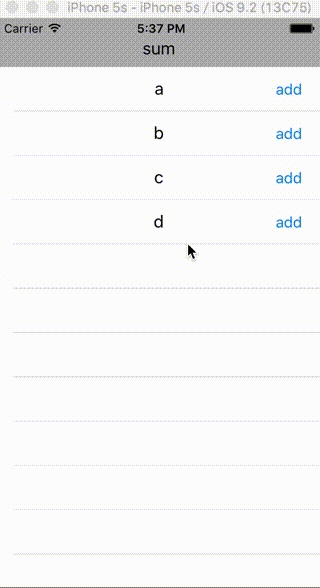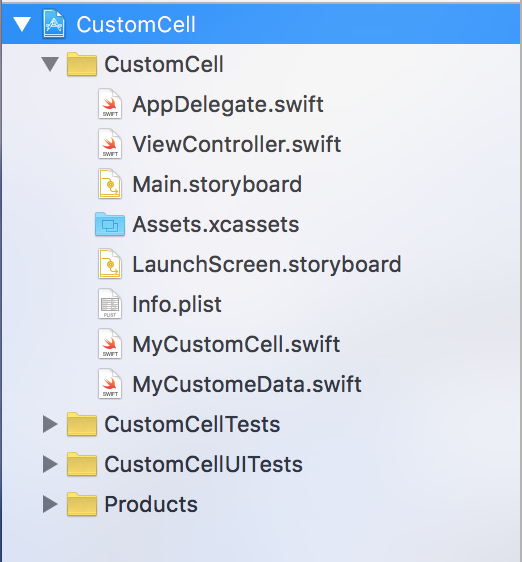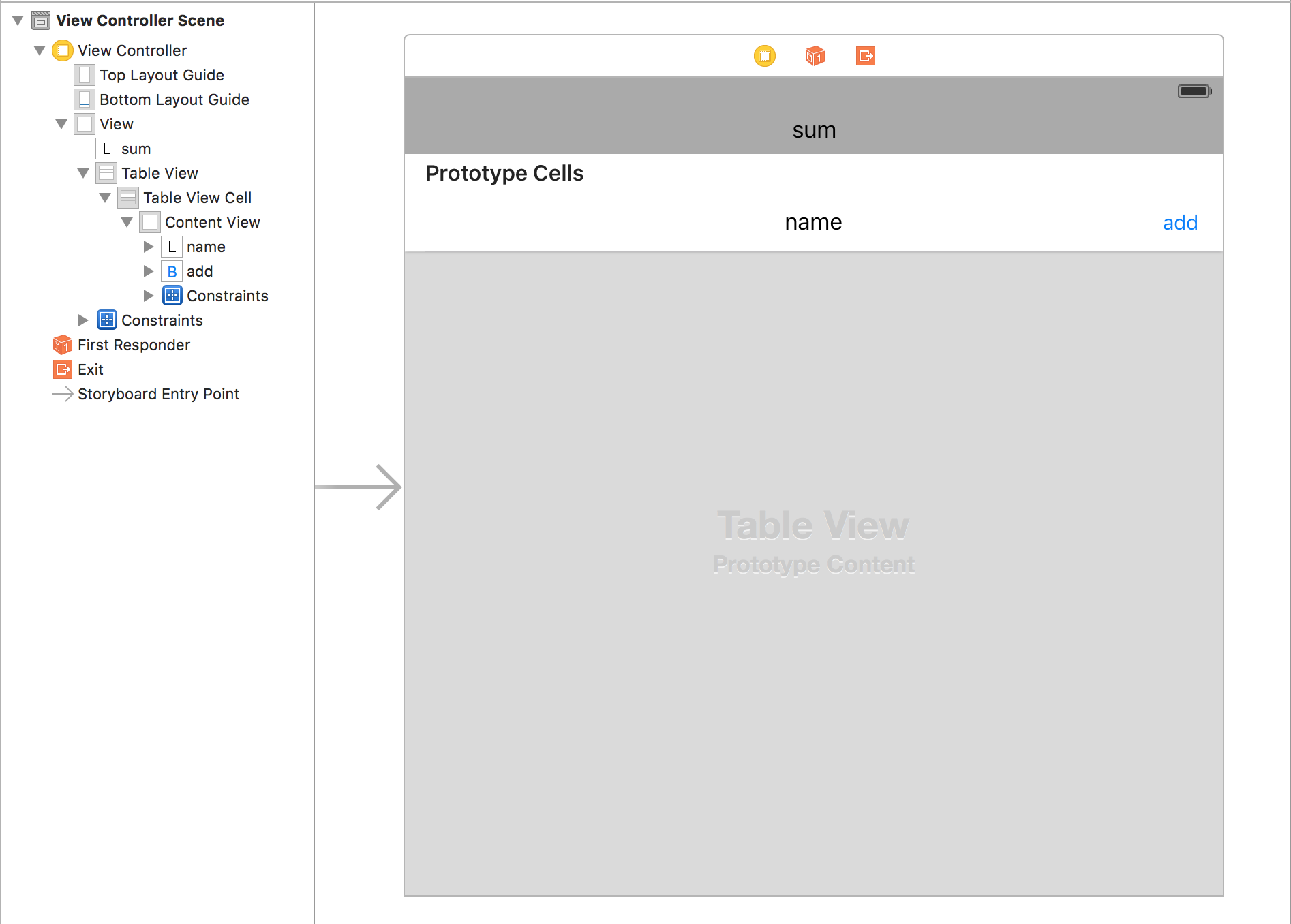TableViewの各列にボタンやテキストフィールドを付けて、入力の総和で出力を変えたりしたかったのですが、なかなか苦労したので調べたことをまとめておきます。
こういうのが目標。
作成手順
- セルに必要なデータのクラスを作成する
- UITableViewCellを継承したクラスを作成する
- storyboardにTableViewとTableViewCellを設置する
- TableViewCellのCustom Class、Identifierを設定する
- Outletを設定する
- TableViewを表示するようにViewController.swiftを書く
- ボタンのアクションをViewController.swiftに作成する
作り終わった後のファイル一覧を示します。
今回は、MyCustomData.swiftと、MyCustomeCell.swiftを追加しています。
セルに必要なデータのクラスを作成する
MyCustomeData.swift
import Foundation
class MyCustomeData: NSObject {
var name:String
init(name:String) {
self.name = name
}
}
UITableViewCellを継承したクラスを作成する
MyCustomCell.swift
import UIKit
class MyCustomCell: UITableViewCell {
}
storyboardにTableViewとTableViewCellを設置する
マウスで、ぽいぽいとやります。TableViewと区別つくようViewの背景をgrayにしています。
TableViewCellのCustom Class、Identifierを設定する
Custom Class
Identifier
Outletを設定する
MyCustomeCell.swift
import UIKit
class MyCustomCell: UITableViewCell {
@IBOutlet weak var nameLabel: UILabel!
@IBOutlet weak var addButton: UIButton!
func setCell(myCustomData: MyCustomeData) {
nameLabel.text = myCustomData.name
}
}
TableViewを表示するように書く
いつもTableViewを使うように。
ViewController.swift
import UIKit
class ViewController: UIViewController, UITableViewDelegate, UITableViewDataSource {
@IBOutlet weak var tableView: UITableView!
@IBOutlet weak var sumLabel: UILabel!
var myCustomDatas = [MyCustomeData]()
override func viewDidLoad() {
super.viewDidLoad()
// Do any additional setup after loading the view, typically from a nib.
setInitData()
tableView.delegate = self
tableView.dataSource = self
}
override func didReceiveMemoryWarning() {
super.didReceiveMemoryWarning()
// Dispose of any resources that can be recreated.
}
// カスタムセルの初期データはここで適当に与える
func setInitData() {
myCustomDatas.append(MyCustomeData(name: "a"))
myCustomDatas.append(MyCustomeData(name: "b"))
myCustomDatas.append(MyCustomeData(name: "c"))
myCustomDatas.append(MyCustomeData(name: "d"))
}
func tableView(tableView: UITableView, numberOfRowsInSection section: Int) -> Int {
return myCustomDatas.count
}
func tableView(tableView: UITableView, cellForRowAtIndexPath indexPath: NSIndexPath) -> UITableViewCell {
// カスタムセルに設定したIdentifierを指定する
let cell: MyCustomCell = tableView.dequeueReusableCellWithIdentifier("MyCustomCell") as! MyCustomCell
cell.setCell(myCustomDatas[indexPath.row])
return cell
}
}
ボタンのアクションをViewController.swiftに作成する
ViewController.swift
// 省略
@IBAction func addAction(sender: AnyObject) {
if let now = Int(sumLabel.text!) {
sumLabel.text = String(now + 1)
} else {
sumLabel.text = String(1)
}
}
カスタムセルのViewにアクセスする
ViewControllerから作成したセルの情報にアクセスしたい場合は、以下のように書く。例えば、ボタンの名称を取得する。(こんな使い方はしないと思うけど...)
// 押されたボタンを取得
let botton = sender as! UIButton
let cell = botton.superview?.superview as! MyCustomCell
print(cell.addButton.titleLabel?.text)
// クリックされたcellの位置を取得
let row = tableView.indexPathForCell(cell)?.row
print(row)
次いつiOS触るか知らないけど、これで忘れても大丈夫。




